This article appears to contradict the article Public transport. (January 2018) (Learn how and when to remove this template message) |

A taxicab, also known as a taxi or a cab, is a type of vehicle for hire with a driver, used by a single passenger or small group of passengers, often for a non-shared ride. A taxicab conveys passengers between locations of their choice. This differs from other modes of public transport where the pick-up and drop-off locations are determined by the service provider, not by the passenger, although demand responsive transport and share taxis provide a hybrid bus/taxi mode.
There are four distinct forms of taxicab, which can be identified by slightly differing terms in different countries:
- Hackney carriages, also known as public hire, hailed or street taxis, licensed for hailing throughout communities
- Private hire vehicles, also known as minicabs or private hire taxis, licensed for pre-booking only
- Taxibuses, also come many variations throughout the developing countries as jitneys or jeepney, operating on pre-set routes typified by multiple stops and multiple independent passengers
- Limousines, specialized vehicle licensed for operation by pre-booking
Although types of vehicles and methods of regulation, hiring, dispatching, and negotiating payment differ significantly from country to country, many common characteristics exist.
Contents
Etymology
Harry Nathaniel Allen of The New York Taxicab Company, who imported the first 600 gas-powered New York City taxicabs from France in 1907, borrowed the word "taxicab" from London, where the word was in use by early 1907. "Taxicab" is a compound word formed from contractions of "taximeter" and "cabriolet". "Taximeter" is an adaptation of the German word taxameter, which was itself a variant of the earlier German word "Taxanom". "Taxe" (pronounced tax-eh) is a German word meaning "tax", "charge", or "scale of charges". The Medieval Latin word "taxa" also means tax or charge. "Taxi" may ultimately be attributed to ????? from ????? meaning "to place in a certain order" in Ancient Greek, as in commanding an orderly battle line, or in ordaining the payment of taxes, to the extent that ?????? (taxidi) now meaning "journey" in Greek initially denoted an orderly military march or campaign. Meter is from the Greek ?????? (metron) meaning "measure". A "cabriolet" is a type of horse-drawn carriage, from the French word "cabrioler" ("leap, caper"), from Italian "capriolare" ("to jump"), from Latin "capreolus" ("roebuck", "wild goat").
An alternative, folk-etymology holds that it was named for Franz von Taxis, a 16th-century postmaster for Philip of Burgundy, and his nephew Johann Baptiste von Taxis, General Postmaster for the Holy Roman Empire. Both instituted fast and reliable postal services (conveying letters not people) across Europe.
The taxicabs of Paris were equipped with the first meters beginning on March 9, 1898. They were originally called taxamètres, then renamed taximètres on October 17, 1904.
History
Hackney carriages
Horse-drawn for-hire hackney carriage services began operating in both Paris and London in the early 17th century. The first documented public hackney coach service for hire was in London in 1605. In 1625 carriages were made available for hire from innkeepers in London and the first taxi rank appeared on the Strand outside the Maypole Inn in 1636. In 1635 the Hackney Carriage Act was passed by Parliament to legalise horse-drawn carriages for hire. Coaches were hired out by innkeepers to merchants and visitors. A further "Ordinance for the Regulation of Hackney-Coachmen in London and the places adjacent" was approved by Parliament in 1654 and the first hackney-carriage licences were issued in 1662.
A similar service was started by Nicolas Sauvage in Paris in 1637. His vehicles were known as fiacres, as the main vehicle depot apparently was opposite a shrine to Saint Fiacre. (The term fiacre is still used in French to describe a horse-drawn vehicle for hire, while the German term Fiaker is used, especially in Austria, to refer to the same thing).
Hansoms
The hansom cab was designed and patented in 1834 by Joseph Hansom, an architect from York as a substantial improvement on the old hackney carriages. These two-wheel vehicles were fast, light enough to be pulled by a single horse (making the journey cheaper than travelling in a larger four-wheel coach) were agile enough to steer around horse-drawn vehicles in the notorious traffic jams of nineteenth-century London and had a low centre of gravity for safe cornering. Hansom's original design was modified by John Chapman and several others to improve its practicability, but retained Hansom's name.
These soon replaced the hackney carriage as a vehicle for hire. They quickly spread to other cities in the United Kingdom, as well as continental European cities, particularly Paris, Berlin, and St Petersburg. The cab was introduced to other British Empire cities and to the United States during the late 19th century, being most commonly used in New York City.
The first cab service in Toronto, "The City", was established in 1837 by Thornton Blackburn, an ex-slave whose escape when captured in Detroit was the impetus for the Blackburn Riot.
Modern taxicabs
Electric battery-powered taxis became available at the end of the 19th century. In London, Walter C. Bersey designed a fleet of such cabs and introduced them to the streets of London on 19 August 1897. They were soon nicknamed 'Hummingbirds’ due to the idiosyncratic humming noise they made. In the same year in New York City, the Samuel's Electric Carriage and Wagon Company began running 12 electric hansom cabs. The company ran until 1898 with up to 62 cabs operating until it was reformed by its financiers to form the Electric Vehicle Company.
The modern taximeter was invented and perfected by a trio of German inventors; Wilhelm Friedrich Nedler, Ferdinand Dencker and Friedrich Wilhelm Gustav Bruhn. The Daimler Victoria—the world's first gasoline-powered taximeter-cab—was built by Gottlieb Daimler in 1897 and began operating in Stuttgart in 1897. Gasoline-powered taxicabs began operating in Paris in 1899, in London in 1903, and in New York in 1907. The New York taxicabs were initially imported from France by Harry N. Allen owner of the Allen-Kingston Motor Car Company. Their manufacturing took place at Bristol Engineering in Bristol, Connecticut where the first domestically produced Taxicabs were built in 1908, designed by Fred E. Moskovics who had worked at Daimler in the late 1890s. Albert F. Rockwell was the owner of Bristol and his wife suggested he paint his taxicabs yellow to maximise his vehicles' visibility. Fred was one of the organizers of the first Yellow Taxicab Company in New York.
Taxicabs proliferated around the world in the early 20th century. The first major innovation after the invention of the taximeter occurred in the late 1940s, when two-way radios first appeared in taxicabs. Radios enabled taxicabs and dispatch offices to communicate and serve customers more efficiently than previous methods, such as using callboxes. The next major innovation occurred in the 1980s when computer assisted dispatching was first introduced.
As military and emergency transport
Paris taxis played a memorable part in the French victory at First Battle of the Marne in the First World War. On September 7, 1914, the Military Governor of Paris, Joseph Gallieni, gathered about six hundred taxicabs at Les Invalides in central Paris to carry soldiers to the front at Nanteuil-le Haudoin, fifty kilometers away. Within twenty-four hours about six thousand soldiers and officers were moved to the front. Each taxi carried five soldiers, four in the back and one next to the driver. Only the back lights of the taxis were lit; the drivers were instructed to follow the lights of the taxi ahead. The Germans were surprised and were pushed back by the French and British armies. Most of the taxis were demobilized on September 8 but some remained longer to carry the wounded and refugees. The taxis, following city regulations, dutifully ran their meters. The French treasury reimbursed the total fare of 70,012 francs. The military impact of the soldiers moved by taxi was small in the huge scale of the Battle of the Marne, but the effect on French morale was enormous; it became the symbol of the solidarity between the French army and citizens. It was also the first recorded large-scale use of motorized infantry in battle.
The Birmingham pub bombings on 21 November 1974, which killed 21 people and injured 182, presented emergency services with unprecedented peace time demands. According to eye witness accounts, the fire officer in charge, knowing the 40 ambulances he requested were unlikely to be available, requested the Taxi Owners Association to transport the injured to the nearby Birmingham Accident Hospital and Birmingham General Hospital.
Vehicles
Taxi services are typically provided by automobiles, but in some countries various human-powered vehicles, (such as the rickshaw or pedicab) and animal-powered vehicles (such as the Hansom cab) or
Watch movie Taxi online on Amazon
Watch movie Taxi online
Watch The Movie On PrimeRam Gopal Varma Ki Aag Full HD Movie Download
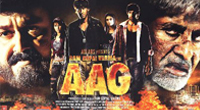
Humla Full HD Movie Download

Luck By Chance Full HD Movie Download

Aasoo Bane Angaarey Full HD Movie Download

The Great Gambler Full HD Movie Download

Gudgudee Full HD Movie Download
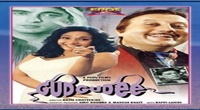
Lalchee Full HD Movie Download

Gumnaam (1965) Full HD Movie Download
.jpg)
Jigarwala Full HD Movie Download
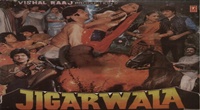
Body Parts Full HD Movie Download
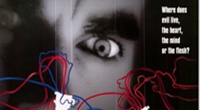
Haage Summane Full HD Movie Download

Keun Duniaru Asila Bandhu Full HD Movie Download
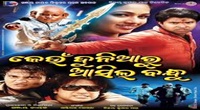
Seetharamakalyanam Full HD Movie Download

Gruha Pravesham Full HD Movie Download
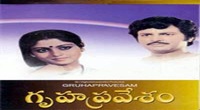
Nee Paathi Naan Paathi Full HD Movie Download

Kathiki Kankanam Full HD Movie Download
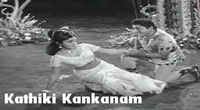
Edutha Sabatham Mudipen Full HD Movie Download

Babruvahana Full HD Movie Download
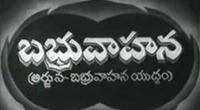
Maro Seetha Katha Full HD Movie Download
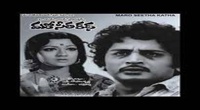
Mayajalam Full HD Movie Download
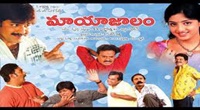
Manasulu Mamathalu Full HD Movie Download
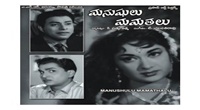
Download latest Movie from bollywood
- 1> baaghi 3
- 2> THE SKY IS PINK MOVIE FULL STORY AND REVIEW
- 3> Luka Chuppi
- 4> TO ALL THE BOYS I’VE LOVED BEFORE
- 5> Kabir Singh
- 6> Street Dancer 3D
- 7> Simmba
- 8> Gone Girl
- 9> The Girl Who Lived
- 10> Ludo
- 11> DILWALE DULHANIA LE JAYENGE
- 12> GUILTY
- 13> The Godfather
- 14> Adventures of Rusty
- 15> Sooryavanshi
- 16> Satyameva Jayate 2
- 17> Thappad
- 18> Bhool Bhulaiyaa 2
- 19> KGFChapter 2
- 20> Mardaani 2
- 21> Pinjar
- 22> Shivaji maharaj
- 23> Ek Villian 2
- 24> Hungama 2
- 25> Divergent
- 26> Mumbai Saga
- 27> The Internship
- 28> HIT (telugu)
- 29> Panga
- 30> The perfect date
- 31> 16 December
- 32> Gopala Gopala (Telugu)
- 33> Brahmastra
- 34> Gangubai Kathiawadi
- 35> Manmadhudu
- 36> Nenu local
- 37> Mahanati
- 38> Shatamanam bavathi
- 39> Lagaan
- 40> After
- 41> MOM
- 42> Shamshera
- 43> Raguvaran BTech
- 44> Khakee
- 45> The villain
- 46> OM
- 47> Mr. perfect
- 48> Bueatifull mind
- 49> Hichki
- 50> Gabbar Singh
- 51> Jogi
- 52> Before Sunrise
- 53> Before Sunset
- 54> Before Midnight
- 55> The Big Bull
- 56> Top Gun: Maverick
- 57> The Purge
- 58> The Sky is Pink
- 59> Laxmmi Bomb
- 60> Sadak 2
- 61> Sufna
- 62> Prithviraj
- 63> PK
- 64> Coolie No 1(2020)
- 65> Black Widow
- 66> Dear Zindagi
- 67> Dil Bechara
- 68> PHIR HERA PHERI
- 69> WAR
- 70> Dostana
- 71> RRR: Roudram Ranam Rudhiram
- 72> Maidan
- 73> Dabbang 3
- 74> Chhalaang
- 75> life as we know it
- 76> SherShaah
- 77> Sandeep Aur Pinky Faraar
- 78> Event Horizon
- 79> 83
- 80> Radhe: Your Most Wanted Bhai
- 81> Gunjan Saxena: The Kargil Girl
- 82> Mr India
- 83> Vivah
- 84> Anokha Bandhan
- 85> Ghost
- 86> Bhoot: Part One - The Haunted Ship
- 87> Haseen Dilruba
- 88> Laal Singh Chaddha
- 89> Qismat
- 90> Rajput
- 91> Drive
- 92> Dil Chahta Hai
- 93> Dil Ki Baazi
- 94> Dil Ka Rishta
- 95> Teesri Manzil
- 96> Dil
- 97> Love Aaj Kal
- 98> Khaali Peeli
- 99> Bunty Aur Babli 2
- 100> Atrangi Re
- 101> Gulabo Sitabo
- 102> Jodi
- 103> Suraj Pe Mangal Bhari
- 104> Deewana
- 105> Attack
- 106> Sardar Udham Singh
- 107> Toofan
- 108> THE LOVEBIRDS
- 109> Jersey
- 110> Ginny Weds Sunny
- 111> Thalaivi
- 112> Shiddat
- 113> Angels vs Zombies
- 114> Koi Mil Gya
- 115> Thank God
- 116> Bhuj: The Pride of India
- 117> Hum Aapke Hain Kaun
- 118> The Platform
- 119> Bird Box
- 120> Roohi Afzana
- 121> Torbaaz
- 122> Nikamma
- 123> World War Z
- 124> Extraction
- 125> Train to Busan
- 126> Life of Pi
- 127> SHAADI MEIN JROOR AANA
- 128> Himmat Aur Mehnat
- 129> To All The Boys: P.S. I Still Love You
- 130> Mimi
- 131> Good Newwz
- 132> Shubh Mangal Zyada Saavdhan
- 133> Raabta
- 134> Harry Potter and the Philosopher's Stone
- 135> Harry Potter and the Chamber of Secrets
- 136> Chhapaak
- 137> War of the Worlds
- 138> Harry Potter and the Prisoner of Azkaban
- 139> Harry Potter and the Goblet of Fire
- 140> MURDER MYSTERY
- 141> Shakuntala Devi
- 142> Bachchan Pandey
- 143> Jayeshbhai Jordar
- 144> Sheer Qorma
- 145> Saina
- 146> 'O' Pushpa I hate tears
- 147> Kedarnath
- 148> MS Dhoni The Untold Story
- 149> Chhichhore
- 150> Badhaai Ho
- 151> Unstoppable
- 152> Oz the Great And Powerful
- 153> The Girl on the Train
- 154> Haathi Mere Saathi 2020
- 155> The Conjuring: The Devil Made Me Do It
- 156> Gandhi Se Pehle Gandhi
- 157> The Song of Scorpions
- 158> Srimanthudu
- 159> Hello Guru Prema Kosame
- 160> Beauty and The Beast
- 161> Black Panther
- 162> Charlie and the Chocolate Factory
- 163> Bole Chudiyan
- 164> Fidaa
- 165> Duvvada Jagannadham
- 166> Bruce Lee: The Fighter
- 167> Hyper
- 168> Yaara
- 169> Red (2020)
- 170> Shivam
- 171> That Is Mahalakshmi
- 172> Nishabdham
- 173> Aashram 2020 web series
- 174> Laxmii
- 175> Mismatched
- 176> STUDENT OF THE YEAR 2
- 177> NAIL POLISH
- 178> Ramprasad Ki Tehrvi
- 179> KAAGAZ
- 180> 12 o Clock
- 181> The Power
- 182> bolo hau
- 183> Tribhanga
- 184> JAMUN
- 185> Madam Chief Minister
- 186> Maasaab
- 187> Aadhaar
- 188> Tanhaji
- 189> Bhaagi 3
- 190> Bhootnath
- 191> MALANG
- 192> Jai Mummy Di
- 193> Haathi Mere Saathi 2021
- 194> Shakeela
- 195> Unpaused
- 196> Annayya
- 197> Vamsoddharakudu
- 198> Mrugaraju
- 199> Narasimha Naidu
- 200> Sankranti
- 201> Manasu Maata Vinadhu
- 202> Anjaane
- 203> Apaharan
- 204> Bachke Rehna Re Baba
- 205> Bewafaa
- 206> Roohi
- 207> Radhe
- 208> Zindagi Khoobsoorat Hai
- 209> Yeh Mohabbat Hai
- 210> Yeh Kya Ho Raha Hai?
- 211> The Tomorrow War
- 212> DehradunDiary
- 213> Meri Shaadi Karaoo
- 214> Matruu Ki Bijlee Ka Mandola
- 215> No One Killed Jesica
- 216> Aag Ka Goola
- 217> Eight Million Dollars
- 218> Three Hundred
- 219> Cats and Dog
- 220> Decoy
- 221> Gold Rush
- 222> You Have Got Mail
- 223> Final Destination three
- 224> Tofan
- 225> Jungle
